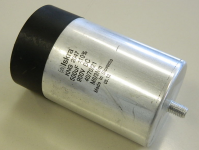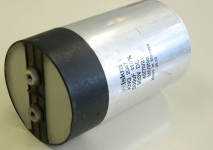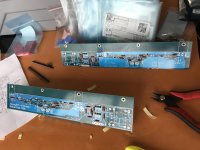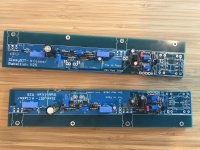Backlog of projects as usual, but sontero you motivated me to phone in my Cinemag order today. I couldn't make up my mind over hi vs. lo nickel so I got both types to experiment with.
BK
BK
I am very interested to hear your findings about the differences of hi-nickel vs. lo-nickel Cinemags, because I only ever have heard the high-nickel one 🙂
Best regards, Claas
Best regards, Claas
I am very interested to hear your findings about the differences of hi-nickel vs. lo-nickel Cinemags, because I only ever have heard the high-nickel one 🙂
Best regards, Claas
Nickel core transformers have significantly lower distortion at low signal levels, but tend to saturate earlier but it depends on how they are implemented within the circuit. . 80% Nickel should be more immune to hum (dead silent) as the nickel affords higher permeability (conductance Mu) and increases primary inductance.The better beast of both of them is Metglas® core transformer or nanocrystalline cores are superior in transparency and reproducing detail.
Last edited:
the quality of a transformer lies not only in the type of iron .... many other elements come into play
I have a number of these big PP caps from ISKRA (surplus material but in perfect condition). My intention was to try to adopt them on the Sissy (the problem is size, they measure 14 x 8.5 cm). The intention was to use them as decoupling Rail to Rail, so it would take two as it is a dual mono. So I should intercept the +24 and -24 cables near the amplification board. Does that sound like a good idea?
Attachments
just connect their wires to last regular caps, or connect them as you said .... I believe there will not be difference
what is important - that they're in ......
what is important - that they're in ......
I am very interested to hear your findings about the differences of hi-nickel vs. lo-nickel Cinemags, because I only ever have heard the high-nickel one 🙂
Best regards, Claas
I went with Hi nickel ones, my guess is there isn't much difference. Will be interested to hear from those comparing both as well.
Russellc
just connect their wires to last regular caps, or connect them as you said .... I believe there will not be difference
what is important - that they're in ......

R13+C3 is (series) RC eq compensation only if you're using Edcor
I soldered smd C3
if you're using Edcor - solder R13 in
if you're using other than Edcor , don't solder R13 and C3 is left flapping in breeze (so you can ignore it)

I soldered smd C3
if you're using Edcor - solder R13 in
if you're using other than Edcor , don't solder R13 and C3 is left flapping in breeze (so you can ignore it)

no need for that..... I can't see any benefits
edit: just complications ..... switching reg asking for more uF for stability , while with regular 7805 you're good with 100nF in front and at back , in proximity and with this level of current
edit: just complications ..... switching reg asking for more uF for stability , while with regular 7805 you're good with 100nF in front and at back , in proximity and with this level of current
Last edited:
First of all, thank you for a nice kit ZM!
There is (voltage ref?) LM358AXZ in schema, but LM336 in a bag. I pretty sure that it doesn't matter what to use, but would like confirmation?
There is (voltage ref?) LM358AXZ in schema, but LM336 in a bag. I pretty sure that it doesn't matter what to use, but would like confirmation?
Last edited:
lazy ZM 🙂
look at same position on Sissy schm
Ah, clear! It seems I'm blind since have been studying these schematics side by side almost all the time.
........
What does this mean in practice in measured behaviour or sound for those of us -like me- who can only build according to instruction and not comprehend these circuits quite so well?
- Home
- Amplifiers
- Pass Labs
- Babelfish M25, SissySIT - general building tips and tricks




